
- Home
- Workshops / Tours
- Diary / Blog
- Galleries
- Foreign Trips
- Tasmania 2016
- NE Queensland 2016
- Western Alps 2016
- NE Spain 2016
- Australia's Wet Tropics 2015
- Australia's Top End 2015
- SW Australia 2015
- Switzerland 2015
- Andalucia 2015
- Belize 2015
- Australia 2014
- Switzerland 2014
- Belize 2014
- Bahama Islands 2014
- Switzerland 2013
- Ecuador 2012-2013
- Florida 2011-2012
- Vancouver Island 2011
- Australia 2010
- Peru 2008
- Bulgaria 2007
- Lesvos 2006
- California 2006
- New Zealand 2005
- Extremadura 2005
- Goa, India 2004
- The Gambia 2003
New Zealand
5th November - 4th December 2005
Queen Charlotte Sound
The 3 hour ferry crossing from North Island to South Island enters Picton harbour via the Tory Channel and the southern end of the Queen Charlotte Sound. En route it passes through some very picturesque coastal scenery.
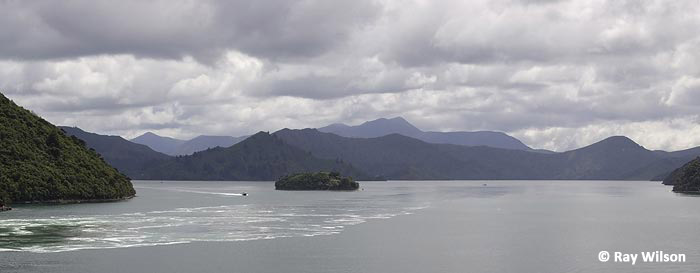
Looking back along the Queen Charlotte Sound as the ferry enters Picton harbour.
Thankfully, the overcast skies had cleared by the time the Dolphin Watch 'Birdwatcher's Special' Tour departed an hour after the ferry's arrival.
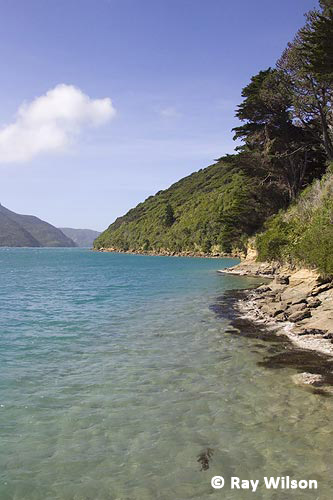
Queen Charlotte Sound
As the company's name suggests, their primary focus is in seeing the dolphins that live in the Sound. The most common of the two species encountered were Dusky Dolphins. This small group of about 20 individuals had several newborn calves, some of which were probably only a couple of days old since the foetal crease was still visible.
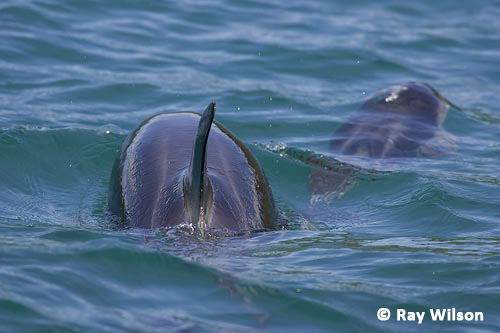
Mother & baby Dusky Dolphins (Lagenorhynchus obscurus)
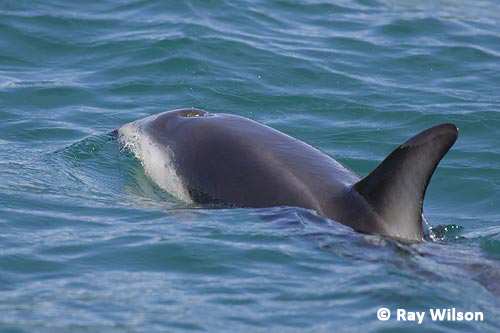
Dusky Dolphin (Lagenorhynchus obscurus)
The other dolphin species we encountered on this trip was the much rarer Hector's Dolphin. These are endemic to the coastal waters of New Zealand and with an estimated population of only 7500 is probably the rarest marine dolphin in the world.
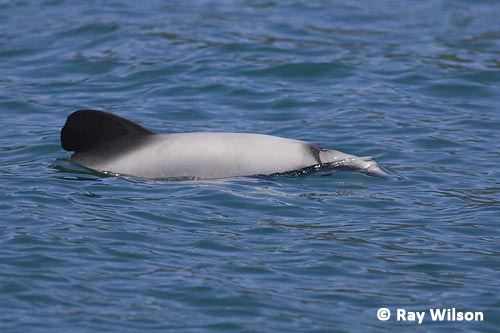
Hector's Dolphin (Cephalorhynchus hectori)
The main purpose of this trip, however, was to see the very rare King Shag. The world population of this bird is less than 500 individuals and all of them are found only on a few small colonies at the entrance to the Queen Charlotte Sound. They are incredibly sedentary for an ocean-living seabird, and are almost never seen outside of the Marlborough Sounds.
The non-birders in the group (almost everyone) were dropped off on Motuara Island for a walk, while myself and two others were taken out to see the King Shags. The seas were extremely rough out near their breeding cliffs (which were unoccupied since they are winter breeders), making it almost impossible to spot them on the water. Luckily, two individuals were kind enough to fly-by then land not far from the boat...
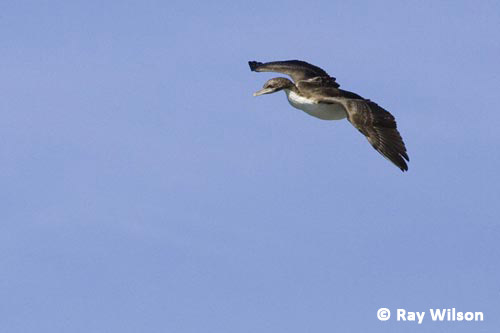
King Shag (Phalacrocorax carunculatus)
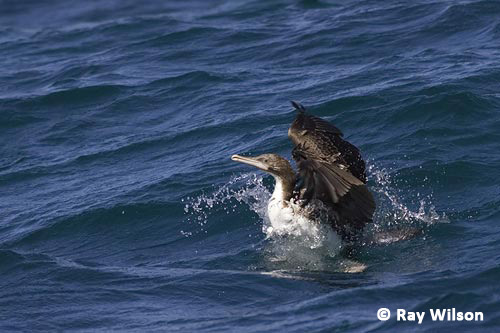
King Shag (Phalacrocorax carunculatus)
After being thrown around by the rough seas for 10 minutes while we watched the Shags, we headed back to the sheltered waters of the Sound and had a short stop on Motuara Island while we waited on the rest of the group to finish their walk.
A short way, up the trail is a tiny little pool which is a great spot for seeing the island's indigenous wildlife, such as Saddleback, New Zealand Robin and Bellbird...
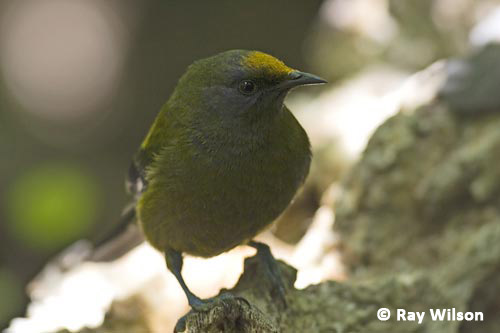
Bellbird (Anthornis melanura)
The yellow foreheads seen on many Bellbirds and Saddlebacks at this time of year is due to pollen, collected when the birds poke their heads inside flowers to drink the nectar.
On the return journey back to Picton, some common birds encountered were...
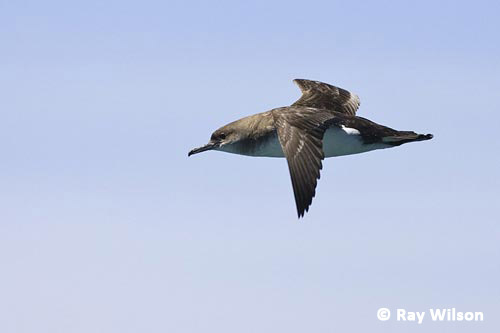
Fluttering Shearwater (Puffinus gavia)
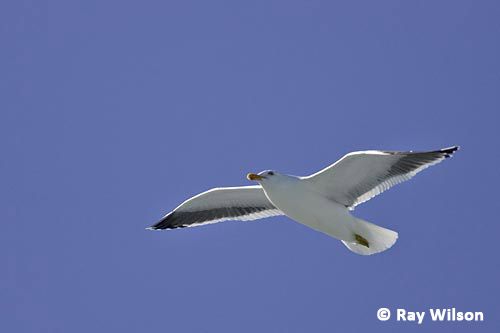
Kelp Gull (Larus dominicanus)
Two weeks later, on my return journey back to North Island, I was a few hours early arriving at Picton, so I visited the nearby Karaka Point Pa to kill some time. This is the site of an old defended Pa (Maori settlement) with several excavated raised rim storage pits.
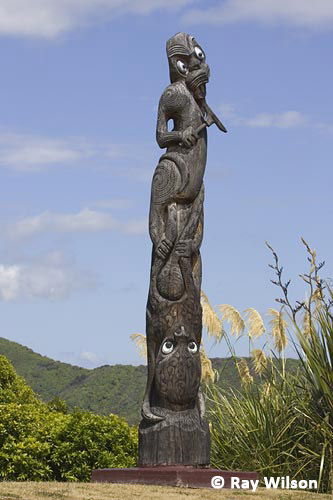
Sculpture at the Karaki Point Pa car park
California Quail were easy to photograph here...
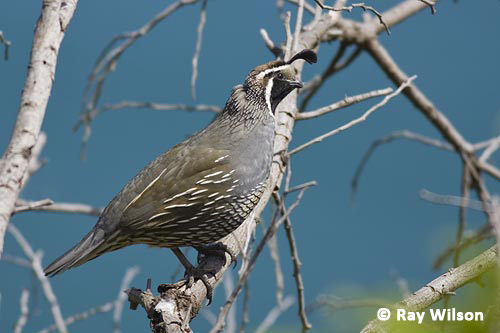
Male California Quail (Callipepla californica)
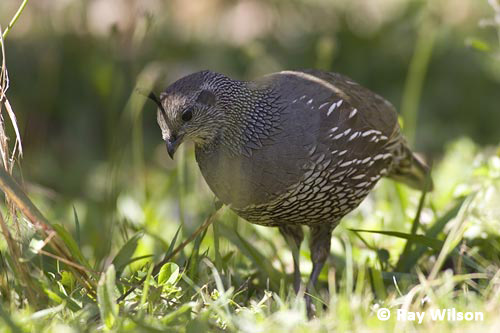
Female California Quail (Callipepla californica)
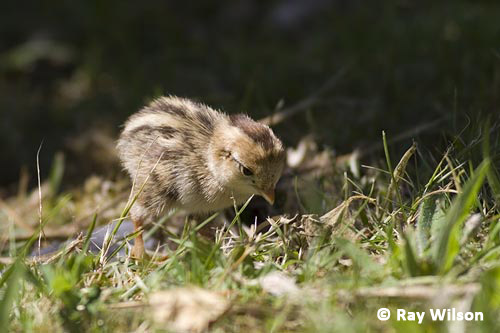
very young California Quail (Callipepla californica) chick
| Ruatiti | New Zealand map | Kaikoura Pelagics |
Ray Wilson owns the copyright of all images on this site.
They may not be used or copied in any form without prior written permission.
raywilsonphotography@googlemail.com